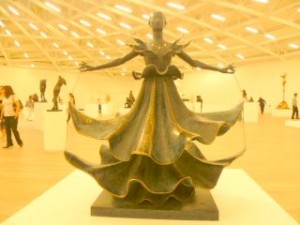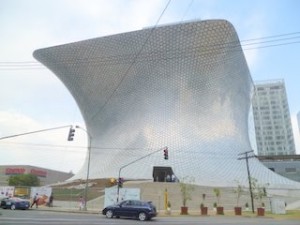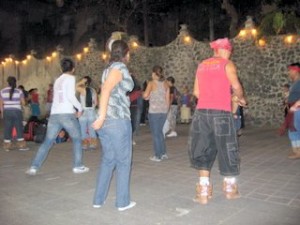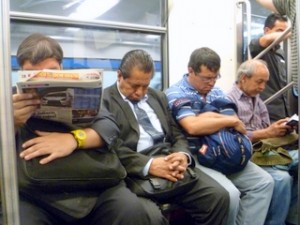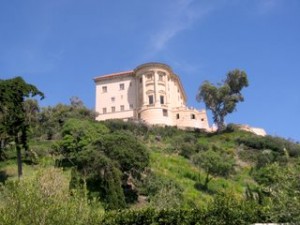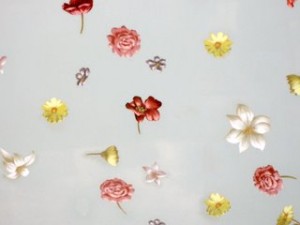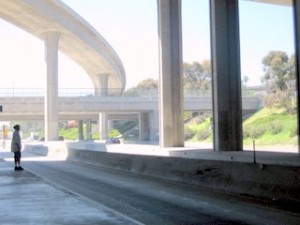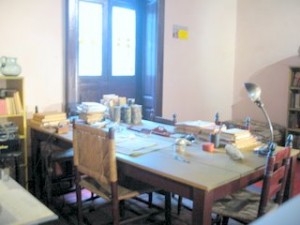I am amazed at how poor some of our prominent “analysts” are at analysing, particularly when it involves other countries, or even other people. I think it is a failure of imagination, which is not to take away from the fact that it is a catastrophic failure. If you can’t get into your opponent’s mind then you are of little use as an advisor, or leader.
April 12, 2011 | Tom Quirk
Further Events at Fukushima
There are now a number of excellent websites that give detailed analyses of the events at Fukushima.
There is an excellent general article on Fukushima by Richard Wilson on public health aspects as well as some detail on the incidents at the power plant. Richard Wilson has written extensively on risk-benefit analysis and his catalogue of disasters puts this event very much closer to Three Mile Island than to Chernobyl. There are also some interesting comments on the consequences of evacuation enhancing the risk of cancers. Finally there are some pointed remarks on the news media reporting nuclear incidents. The ABC ia a good example of selective reporting with one interview from an Australian school teacher living in Tokyo.
http://physics.harvard.edu/~wilson/Japanese_reactors.html
A thorough explanation of the events, as currently understood, is on the AREVA website. The analysis has detailed diagrams covering both the reactors and the spent fuel storage. Most concern and uncertainty appears to be directed at the spent fuel stored in the pool at Unit 4. This is because all the nuclear fuel was transferred some three months before the earthquake into the pool so there is a much greater thermal load in Unit 4 than in the pools by the other reactors. The term “criticality” has been used in some reports on the state of the spent fuel pools. This does not mean a nuclear explosion but rather the possible sustained release of radioactive material.
http://energyfromthorium.com/pps/FukushimaDaiichiAREVA.pps#265
Finally there is an extensive set of articles on Wikipedia that covers most aspects. Their links to definitions of technical terms enables you to drill down into many aspects of nuclear reactor operation and safety.
http://en.wikipedia.org/wiki/Fukushima_I_nuclear_accident
In summary, the power plants buildings are mostly intact unlike Chernobyl. This means that the fission products released in steam will fall to ground close to the plant.
The main radioactive contributions outside the plant will be carried by wind but with decreasing activity and none or little local contamination of soil.
Great care has been exercised monitoring radiation exposure of plant operators.
For the surrounding populace, the stress of leaving their homes may cause more harm than the radiation risks. There will probably be no need to create a protective land zone around the plant.
The remaining and important issues are how well the company (TEPCO), regulators, politicians and the media managed and reported the event.
Nuclear power is at present the only viable candidate for baseload power supply if fossil fuel power generation is to be reduced.
April 06, 2011 | Ronda Jambe
Easily overwhelmed
Travelling may expand the mind, but it can also shrink time. In less than two weeks the sound of the ocean in the distance, and Skippy’s mates thumping around at night has been replaced by the much more varied noises of a city with as many residents as in all of Australia.
The bigger the city, the more complex all actions become. By the time we found our way via public transport to the correct Soumaya Museum in Mexico City (the smaller one was also good), we were somewhat exhausted from a combination of traffic noise, altitude and pollution.
What a joy then to behold a jewel of a building, and I had to add this picture to my growing photographic study of ladies’ loos around the world: 
The Soumaya is world class in every way, a gift not just to the Mexican people but to the world. My spouse declared it will become an iconic symbol for Mexico City, like Sydney’s Opera House. The delights included a top floor with some Dali sculptures of perfection:
The floors wind down, like the NY Guggenheim, but not as circular, and the displays are in the centre, not along the outside. From the street, it is unmistakably distinctive, far more impressive than this photo indicares. Perhaps the anvil shape has something to do with Mexico’s history of workers struggling against oppression:
After visiting the Museum of the Interventions, dedicated to the four invasions of the 19th century, I realised another reason why I am so drawn to Latinoamerican countries and people. There is no separation between their art, their politics, and their culture. Their struggles have been endless, and it must grate that the US is trying to limit their access, after having taken so much of their territory. Why not become a truly United States of North America, and be done with it?
It is also not clear why Mexico isn’t included in the BRIC countries, as it seems in the capital, at least, to be more developed than India. Considering the size of the place, it is kept pretty clean, and the public spaces are well used and well respected. Despite all the warnings, we have felt no sense of threat or danger.
In recent years we have become part of a global musical chairs of academic’s dwellings, and when the music stopped this time we found ourselves in a very pleasant 3rd flood flat, close by the public plaza. It ticks the key boxes for me of light, air and space (although no floor coverings soft enough for yoga). In the morning band music led us to an official program in the square celebrating women in the police force, and at night the sound of drums took us out to investigate. At first I thought it was some sort of aerobic dance, or Mexican line dancing. Instead it was a reenactment of a pre-hispanic ritual to the four corners of the world. Mostly young adults, many kitted out in scarves and percussive shell anklets, performed around the drums, with less adapt performers at the perimeter. One we dubbed ‘Nijinsky’, for his bare torso and delicate agility. With the church walls and steeple lit up behind it, this group was in a different zone from their Sunday prayers. Apparently it happens twice a week, and isn’t done for money, or for tourists, or even, it seems, for historical preservation. It just is what it is, with energy and ritual for those who want it. At its peak, about 100 people were fully involved, with varying degrees of skill.
The blowing on conch shells, the smoke and incense, the occasional hoots all added to the mood. Although it all seemed good natured, I recalled that the ancestors of these people weren’t sitting around inventing cross-word puzzles and naming roses. They had a ball game in which the loser lost his life.
With such thoughts I thought it might be wise to slip away before the finale, just in case it involved a human sacrifice, with the conch shell pointed at a wide-eyed tourist. What is civilisation after all? Certainly not torturing a swan to death, as has just been reported in Melbourne.
With so much stimulation, no wonder the people get tired. Workers are the same everywhere, and the Mexico City Metro lines are no exception. In fact, it compares favourably with those in other great cities I’ve been to. These fellow travellers could become figures in some of the Diego Rivera murals which we hope to see very soon:
April 06, 2011 | Henry Dickens
O Barry!
Barry O’Farrell has taken over the collapsed state of NSW and set his unique mark on the new regime. As in the past, there’s bravado, some logic and specific pratfalls. People who know him are not surprised and are setting a safety zone, a no man’s land, around him which looks surprisingly like “circling the wagons”.
April 06, 2011 | William York
SAID HANRAHAN
with apologies and thanks to John O’Brien
"We'll all be rooned," said Hanrahan, In accents most forlorn, Below the tower with turning fan, One frosty Monday morn. (more...)
April 04, 2011 | Ronda Jambe
Far Across the Sea
Stepping outside all the comfort zones, we have set off on several months of travel. The discomfort of the endless flight across the Pacific, and the complete bliss of a hotel bed afterwards. That much is familiar, along with the endless grime of the airport district in Los Angeles.
Familiar too is the impressive way everything seems to work well in the US, and the marvel at a hotel that can give us a big room, free wifi, a decent breakfast and a pool (if it were warm enough) along with airport pick up, all for about $60 a night. And now that the $Aussie is about parity, a real bargain.
We set about broadening our minds, cause that’s what travel is all about. First by speaking as much Spanish as the locals would tolerate, and second by exploring the public transport options to access art galleries.
A quick spin on bicycles at Venice Beach, and then a long longed-for visit to the Getty Villa, to marvel at the generous spirit of a man who never even saw the public benefit he created, high on a cliff in Santa Monica:
The Getty Villa houses Roman treasures and antiquities, some of which the Italians would like back. It replicates a villa destroyed near Pompei, and volunteer guides are there to tell us about the architecture and gardens and decorations. It is always surprising how modern some of these look:
These were, of course modern interpretations of Roman painting, but accurate in as much detail as possible.
The LA Metro system is much quicker than the buses, but some of the stations are situated in the middle of freeways, and the sound was just deafening. I always imagine the bicycles multiplying and the cars decreasing, and indeed I have read that road traffic has lessened somewhat in the US, even though the population has grown.Until that transformation happens, the freeways will retain a certain surreal beauty.
The pervasiveness of the movie industry is one of the fun aspects of LA. There is always some shoot going on, hard to miss it. And conversations overheard include references to someone or other who was an extra or had a minor role in some film or another. Or the guy on the bus reading a manual on how to be a stuntman. And the ads for courses on movie makeup. It’s always there in the background, and this time we saw a small photographic display at the LACMA of the recently deceased Liz Taylor in Iran, beautifully decked out in colourful native gear.
But LA was just the entree, and now we are in Mexico City, in the cultural district of Coyoacan, where Frida Khalo and Diego Rivera were part of a coterie of politically minded artists. Lots of opportunities to practice Spanish here, and I’m grateful that I can read it, as the museums don’t always offer English captions.
Yesterday we visited Trotsky’s last house, also his burial place after a demented partisan went at him in his study with an ice pick. Stalin shared the quality we see in certain of today’s leaders, of being a particularly vindictive hater. I don’t know much about the various factions of Russian communism, but it was sad to see where Trotsky wrote and tended rabbits in a fortified house after a first failed assassination attempt. The Mexicans in the 1930s were pretty bolshy themselves, and offered him asylum.
Tomorrow we are setting out to see another art museum created by another incredibly rich man. Carlos Slim is a Lebanese-Mexican, and the richest man in the world. Like the 2 Getty museums in LA, the Soumaya Museum is free, and I am grateful. My mind has already enlarged to reflect on philanthropy on such a scale.
